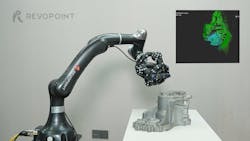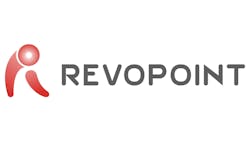Advances in 3D optical scanning and robotic integration, exemplified by solutions like Revopoint Trackit, are transforming industrial inspection—enabling faster, more reliable quality checks without disrupting existing workflows.
If you work on the shop floor or oversee engineering operations, you know the drill: tighter tolerances, faster turnaround times, and growing part complexity. But inspection hasn’t kept pace. Manual tools, older 3D scanners, and workflows that rely heavily on skilled operators are hindering the industry's progress.
Traditional inspection methods are no longer sufficient. They’re slow, inconsistent, and require too much expert labor. That’s why more teams are switching to automated optical scanning systems paired with collaborative robots, like Revopoint Trackit. These solutions accelerate inspections, provide more reliable data, and scale seamlessly as production demand increases.
Where Traditional Inspection Falls Short
Manual scanning means results can vary from one operator to another. Many systems still require adhesive markers, which add setup time and risk damaging parts. Programming inspection paths often demands a skilled technician, and throughput is limited by human availability and batch size. Furthermore, integrating these traditional tools into production workflows is frequently expensive and complex.
These challenges all add up to create real bottlenecks, delay root cause analysis, and increase the chance that defects slip through. For manufacturers running short runs or high-mix production, these inefficiencies quickly pile up.
What Automation Changes
Automated optical scanning addresses these issues by combining accurate 3D scanners with robotic arms and intelligent software. The inspection process becomes faster and more consistent, requiring far less setup and supervision.
For example, marker-free scanning eliminates the need for adhesive targets, cutting down preparation time and keeping parts clean. Drag-to-tech programming enables operators to physically guide the robot arm to create scan paths, eliminating the need for coding. Scanning paths can also be generated directly from CAD models, reducing programming time while ensuring critical features are covered.
Examples of Tracking 3D scanner vs. Non-Tracking 3D scanner
Vision-guided systems automatically adjust to the part's position, eliminating the need for rigid fixtures. Additionally, blue laser scanning enabled the capture of both broad surfaces and fine details in a single pass. These robot platforms typically deliver repeatability within ±0.03 mm, providing the precision required for tolerance checks and first-article inspection.
Revopoint Trackit Robot 3D Scanning System fully automates repetitive 3D scanning tasks
Why This Matters
From an operations standpoint, the benefits are clear. Faster inspection results in shorter lead times and improved throughput. With less dependence on highly skilled labor, manufacturers can better manage staffing challenges. Reliable and repeatable data support traceability, compliance, and continuous process improvements. Because these systems are modular, they can often be integrated into existing production lines without costly overhauls. The payoff comes from time saved and a reduction in scrap rework.
QC Automation for the Real World
The push for more efficient, reliable quality control has been a key driver in the development of these automated scanning solutions. William Zhou, CEO of Revopoint, shared insights into the philosophy behind creating one of such systems - Revo. "Our aim was to break down the traditional barriers of complexity and expense that kept automated, high-precision QC out of reach for many manufacturers. We focused on building a system where the entire inspection process, from positioning to scanning and data analysis, could be streamlined, repeatable, and require minimal manual intervention."
This vision highlights the creation of accessible quality control tools such as the Revopoint Trackit and Vbot 9, designed for modern manufacturing. It combines a compact, high-accuracy optical tracking 3D scanner with a collaborative robot, supporting programming methods like drag-to-teach, CAD-driven paths, and real-time vision guidance.
To explore how these solutions can be applied to your industry and improve your inspection processes, please visit https://revo.ink/a-trackit-iw.
This content is sponsored by:



